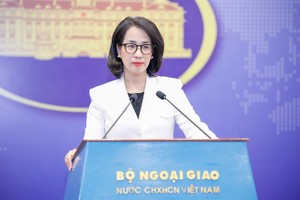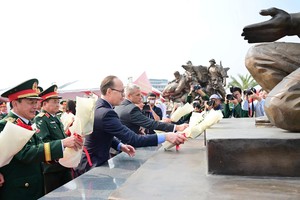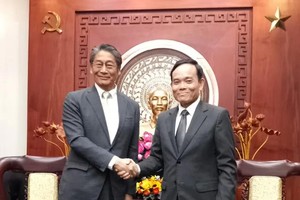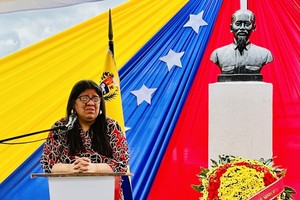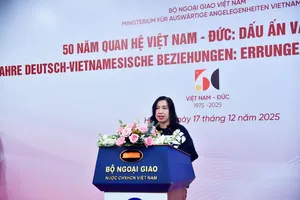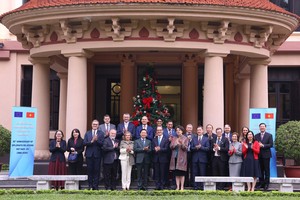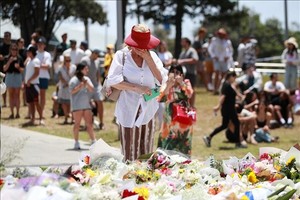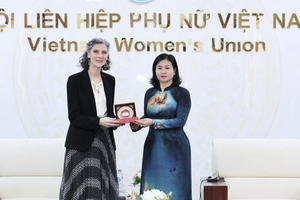WASHINGTON, Mar. 13 (AFP) – The US Federal Reserve's policy makers are expected to maintain benchmark interest rates at virtually zero percent at their meeting this week amid intense debate on how soon the central bank should tighten monetary policy.
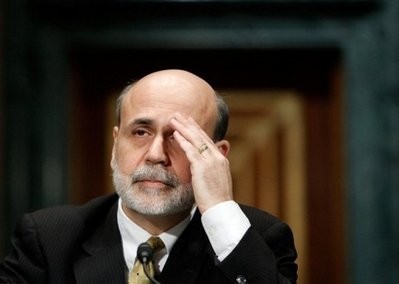
More than a year after the central bank slashed the federal funds rate to an unprecedented zero to 0.25 percent, economists said ultra-low rates were key to sustaining the fragile recovery from recession and easing high unemployment.
But they expect a fierce debate at the Federal Open Market Committee meeting on Tuesday after signs of dissent emerged at the last meeting in January when it voted 9-1 to maintain rates "exceptionally low" for "an extended period."
In voicing rare dissent, Kansas City Fed president Thomas Hoenig felt that policy makers should end the Fed's pledge since December 2008 to keep the fed funds rate -- at which banks charge each other for loans -- low "for an extended period."
Analysts said the dissent raised questions about whether the Fed was losing its consensus that a vast stimulus effort was still needed to hasten economic recovery from the most brutal recession in decades.
"Debate may be sharp at the Federal Open Market Committee meeting next week, but little of it is likely to show up in the policy makers' post-meeting statement," said Ryan Sweet, a senior economist with Moody's Economy.com.
"The Fed needs to keep its foot on the accelerator to nurture the recovery, which remains fragile," he said.
Since the last FOMC meeting, Hoenig and other key central banks officials have gone public in pushing their positions on monetary policy.
While the hawkish Hoenig insisted the Fed should be ready to raise benchmark rates despite near double-digit unemployment, several other policy makers said such a move could derail the fragile recovery.
Boston Fed chief Eric Rosengren, a leading policy dove, said ultra-low rates are "totally appropriate" while Chicago Fed president Charles Evans said he was "quite comfortable" with the near-zero rates for an "extended period."
Many economists believe the current Fed language -- that officials plan to keep rates "exceptionally low" for "an extended period" -- would be maintained in the statement issued after Tuesday's FOMC meeting.
"We expect that they will retain the "EE" phrase -- 'exceptionally' low rates for an 'extended" period,' said IHS Global Insight US economists Brian Bethune and Nigel Gault in a note to clients.
While the FOMC would refer to further strengthening in the economic recovery, the policy makers could point out "continuing constraints on household spending due to tight credit, modest income growth and lower housing wealth," they said.
Businesses remain reluctant to hire and inflation pressures continue to be contained, they said.
The Fed said earlier this month in its Beige Book report -- to be used by the central bank's policy makers as a guide -- that the US economy continued to expand modestly on the back of consumer spending but the labor market remained bleak.
"Slowly but surely the stage will be set for Fed policy rate hikes" but the risks to financial stability from keeping rates too low for too long would still likely elicit a tightening shift before year-end, said Michael Gregory, a senior economist at BMO Capital Markets.
"We?re penciling in September," he said.
The Fed policy makers also are likely to confirm at the meeting the central bank will complete purchases of 1.25 trillion dollars of mortgage-backed securities by the end of this month.
The program was launched to provide extra support for the economy after policy makers slashed rates to near zero.
But the central bank will "also indicate that it will keep the option of purchasing more securities beyond the first quarter should the economic outlook deteriorate," said economist Fabio Fois of Barclays Capital Research.

